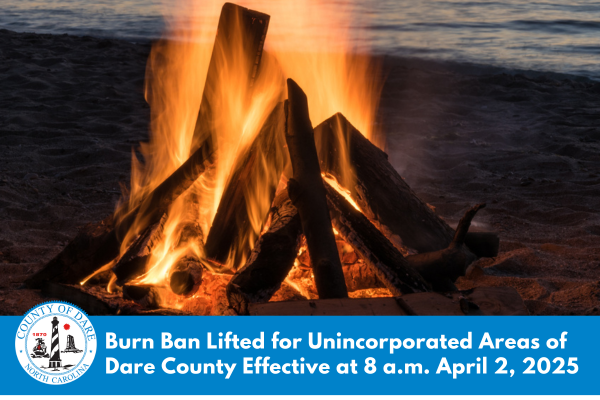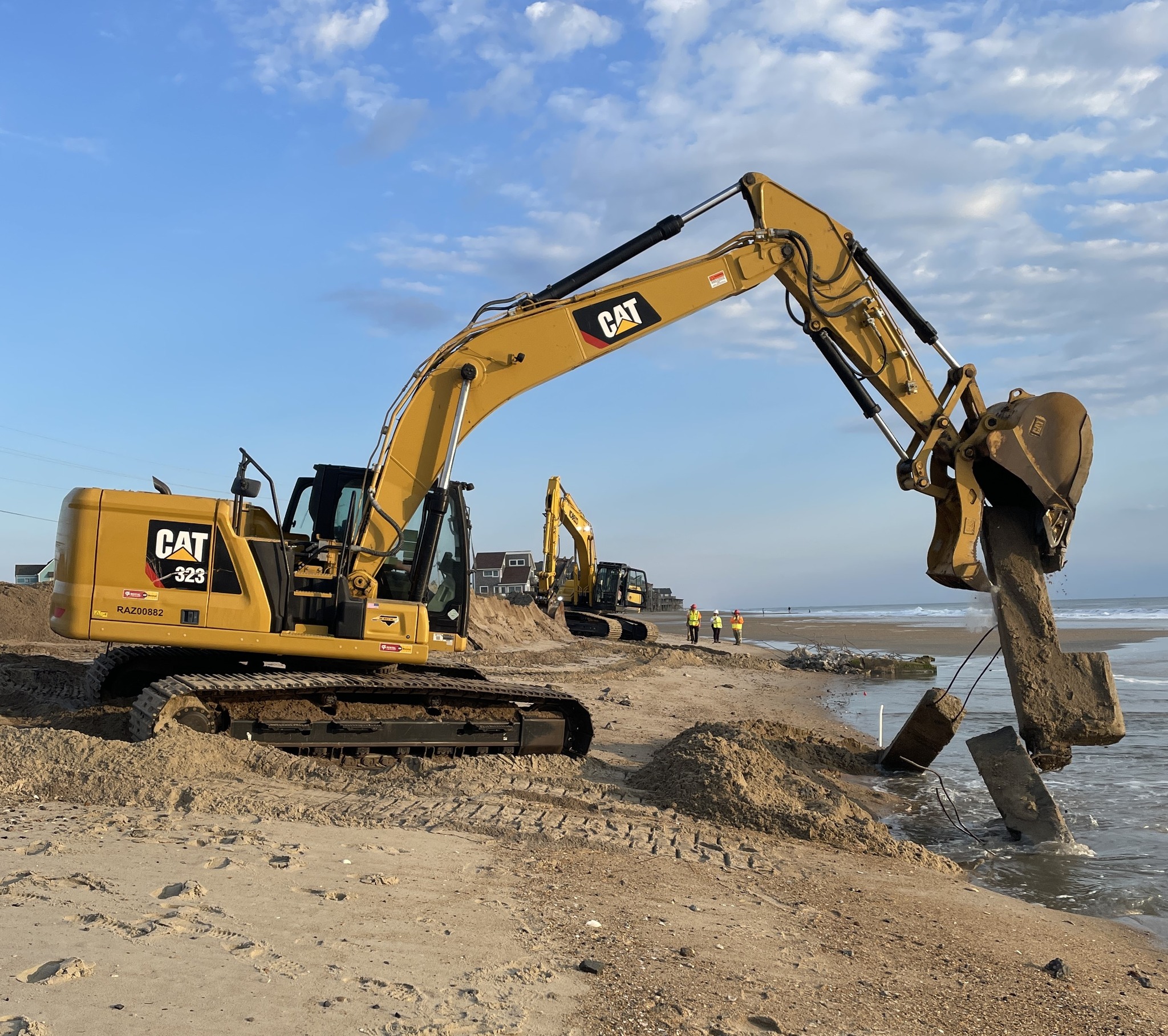UPDATE: Firefighters make progress against Dare mainland wildfire; smoky conditions should improve on Hatteras and Ocracoke
Firefighters got a break today in combating the Pains Bay wildfire in the Alligator River National Wildlife Refuge on the Dare County mainland that has been burning since last Thursday.
Bill Sweet, public information officer for the Southern Area Incident Command Team that took control of firefighting efforts this week, said a planned burnout on the northeast corner of the fire appears to have been successful.
If that is the case, he said, Hatteras and Ocracoke islands will be see less heavy smoke in a day or so, and the village of Stumpy Point will be spared an evacuation.
Sweet said the burnout method involves setting a backfire, in this case in the northeast corner between U.S. 264 and the main fire to the west of the highway. The fire set this afternoon by helicopter will burn back toward the main fire and deprive it of fuel, and hopefully it will burn out.
“I think you notice a difference by, maybe, tomorrow afternoon,” Sweet said of the smoke that has wafted over Hatteras and Ocracoke islands since Sunday morning.
The smoke from the fire to the north and west of Hatteras and Ocracoke has been heavy at times, sometimes like a thick fog. Drivers have reported trouble seeing the Highway at time, ashes have coated the tri-villages, and the acrid smoke has made being outdoors – and sometimes indoors difficult.
The plumes of smoke heading for Hatteras and Ocracoke have been clearly visible on satellite images over the past few days, and some residents of the tri-villages said they could see the fires burning across the Pamlico Sound at night.
The North Carolina Department of Environmental and Natural Resources yesterday issued an air quality alert for the area, including the Outer Banks. The “code orange air quality action day” alert for fine particulates is currently in effect until 8 a.m. on Wednesday.
The wildfire started on Thursday, and the cause was initially thought to be lightning. However, Sweet said that, at this point, the cause in under investigation and won’t be known until fire investigators can get closer to the point of origin, which is still burning hot.
The fire, which was a modest 2,000 acres on Friday exploded over the weekend and was more than 20,000 acres by Sunday evening. Firefighters over the weekend were hampered by high winds and low humidity. Light showers on Sunday did little to improve the situation.
Today, Sweet said the fire was at about 21,000 acres and was 40 percent contained.
It is being fought by the incident team that arrived over the weekend, aid by the U.S. Fish and Wildlife Service, the North Carolina Forest Service, local volunteer fire departments, and other agencies.
About 138 personnel from around the area and the country were involved in fighting the fire yesterday.
Also, if the burnout is successful, the village of Stumpy Point will be largely out of danger.
Sandy Semans, editor of The Outer Banks Sentinel who lives in Stumpy Point, said she has had her evacuation bag packed and in her car since the weekend.
Over the weekend, the residents of two homes nearest the fires were briefly evacuated by were allowed to quickly return.
Sweet said that some of the heavy peat deposits underground in the area are apparently burning. So far, he said the peat fires appear small, though they can burn for several months.
Still, he emphasized that the main danger and smoke from the fire should be under better control shortly.
A Sikorsky helicopter has been used to dump water on the fire, but the Sentinel reported that firefighters were hampered without one very important piece of equipment used to fight large fires that isn’t available — the state-owned CL 215 “Super Scooper.”
The plane has the capability to scoop up 1,621-3,000 gallons of water and drop it on fires.
“The North Carolina Forestry Service is great at its job and “we are very appreciative of their efforts,” Tom Crews, an incident commander on this fire but Fire Management Officer for Alligator River National Wildlife Refuge complex, said on Sunday. But state budget cuts have reduced personnel and have caused the loss of the use of the CL 215, thus creating a real blow to their fire-fighting capabilities. This important fire-fighting tool is unavailable because it was deemed too expensive to maintain.
“It’s a real workhorse,” said Crews. “It can drop more than three times as much water as any other plane.”
A 10-mile section of U.S. 264 between Stumpy Point and Engelhard remains closed.
FOR MORE INFORMATION
The incident command website for pp-to-date fire information and new photos is www.inciweb.org.
Live satellite imagery of the smoke moving over our area can be found at http://www.ssd.noaa.gov/goes/east/wfo/mhx/flash-vis.html
For more information about state issued air quality alerts, go to www.ncair.org/airaware/forecast/
Click here for previous Island Free Press articles on the wildfire.
Subject
Name
(required, will not be published)
(required, will not be published)
City :
State :
Your Comments:
May be posted on the Letters to the Editor page at the discretion of the editor.
May be posted on the Letters to the Editor page at the discretion of the editor.
May be posted on the Letters to the Editor page at the discretion of the editor.
May be posted on the Letters to the Editor page at the discretion of the editor.















